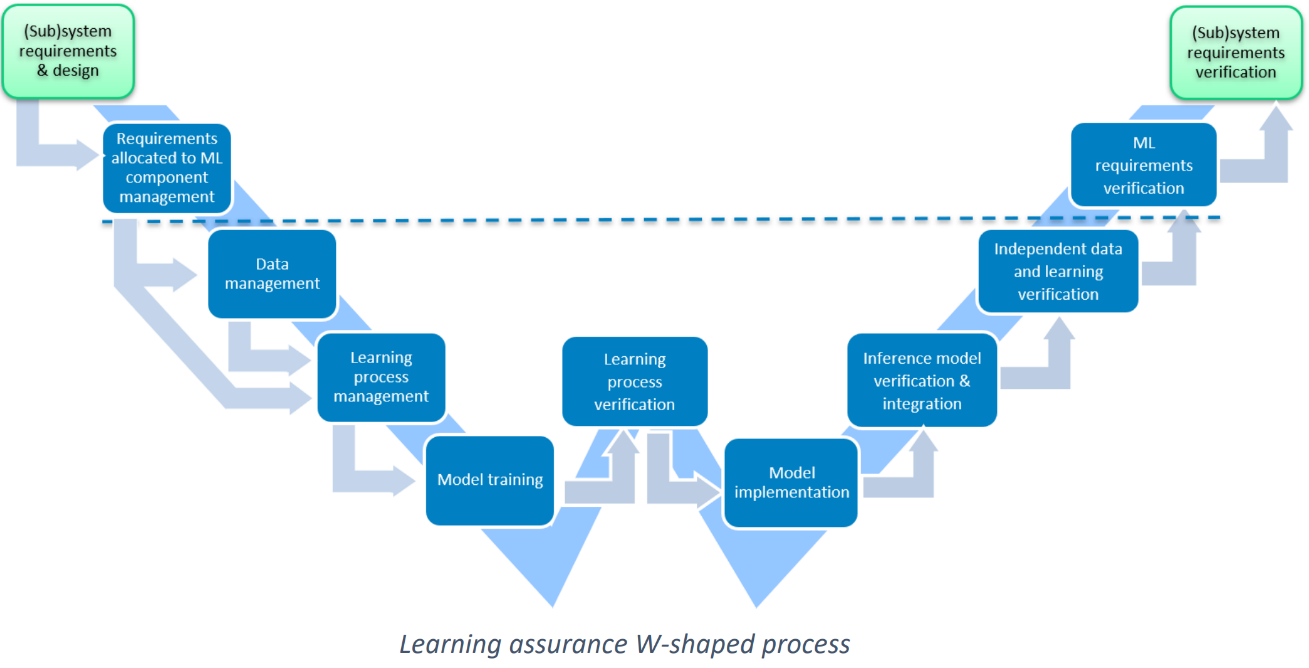The European Union Aviation Safety Agency and Daedalean have concluded their second Innovation Partnership Contract following a 10-month collaboration. The results of this project have been compiled in a 136-page report, Concepts of Design Assurance for Neural Networks (CoDANN) II. A public version of the CoDANN II report has been published to support future discussions in this field.
The goal of this second project was threefold: to investigate topics left out in the first project and report, to mature the concept of Learning assurance and to discuss remaining trustworthy AI building blocks from the EASA AI Roadmap. These steps pave the way to the first applications.
The first project in 2020 investigated the possible use of Machine Learning/Neural Networks in safety-critical avionics, looking in particular at the applicability of existing guidance. An essential finding of the first joint CoDANN report (Public version of the first CoDANN report) was the identification of a W-shaped development process adapting the classical V-shaped cycle to machine learning applications:

Where the first CoDANN project showed that using neural networks in safety-critical applications is feasible, CoDANN II addresses the remaining questions, reaching a conclusion on each of the following topics:
- implementation and inference parts of the W-shaped process (hardware, software and system aspects), encompassing development and deployment aspects;
- definition and role of explainability;
- details on the system safety assessment process, concluding discussions on integrating neural networks into complex systems and their evaluation in safety assessments.
EASA already used some findings from both CoDANN projects in drafting the first usable guidance for Level 1 machine learning applications released for public consultation in April 2021. Comments can still be submitted until June 30, 2021. Points of interest for future research activities, standards development and certification exercises have also been identified. These will contribute to stimulating EASA efforts towards the introduction of AI/ML technology in aviation.